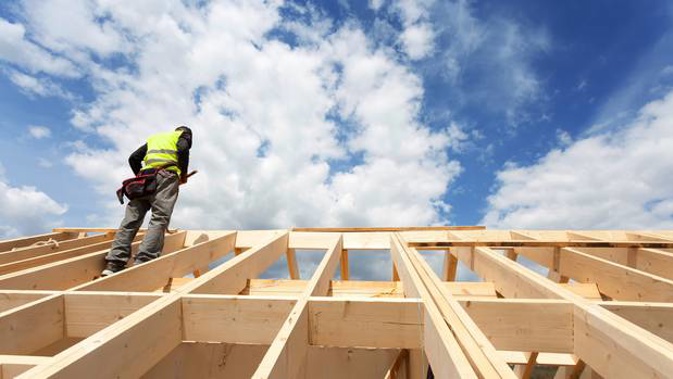
Could New Zealand be heading for a stage where 50,000 building consents are issued for new homes annually?
After years of supply shortages and despite pandemics, rising building costs and gut-wrenching inflation, the sector is now regularly answering the call to build more homes.
Month after month, all-time records are being broken for the number of new consents issued for flats, apartments, townhouses, standalone homes and retirement village units.
Never before have builders got consent for so many new places.
Today, Stats NZ said new home building consent records were smashed yet again, up from the previous 48,522 November annual high to 48,899 for the December yet.
Sure, the naysayers are certainly right: that's pieces of paper being issued rather than physical new homes.
But don't forget that consents usually result in the homes being built. You don't go through the expensive application and planning process without intending to go ahead and put those pegs in the ground.
All throughout 2021, new home consents rose 24 per cent on 2020's consents.
Michael Heslop, construction statistics manager said before last year, the highest number of new homes consented was 40,025 in the year ended February 1974.
That record stood for 47 years until the year ended March 2021 when 41,028 new homes were consented.
Consents for new apartments, flats, retirement village units and townhouses rose 36 per cent to 23,335 last year which consents for new stand-alone houses was up15 per cent to 25,564.
Multi-unit home consents brought down average new home sizes.
We're building smaller now too.
The average floor area of all new homes consented in 2021 was 154sq m, down from 156sq m in 2020.
The average floor area was 200sq m at its peak in 2010, when more than 80 per cent of all new homes consented were stand-alone houses.
In 2021, 52 per cent of all new homes consented were stand-alone houses with an average 195sq m, and 48 per cent multi-unit homes with an average 109sq m.
Kelvin Davidson, CoreLogic chief property economist, said it could be some months before 50,000 consents were granted.
"Whether they get to 50,000 or not, the numbers are very strong. The decline in average square metres has been underway for a while. Getting to 50,000 might not happen for a while," he said.
"It's getting really really hard to get materials. That doesn't necessarily matter for consents but I think costs are getting to the point now where it's turning people off," he said.
"Mortgage rates are higher and it's harder to get finance so the same things that we apply to buying an existing house would be applied to a new build. Getting a mortgage to build is harder from a bank," Davidson said.
"We might not be far off a turning point due to these factors," he said. The lag time between consent and completion might grow due to issues in the sector.
"There is a caveat to these consents numbers because what really matters is the stock of houses. There's a lot of new houses being built but in places like Auckland, there's a lot being knocked down as well. If people think we're headed for oversupply, I would not jump to that conclusion. The total stock is what matters," he said.
New Zealand has around 1.8m houses.
The smaller size of dwellings was a sign of more intensified dwellings, Davidson said, "and that makes so much sense. You only have to go as far as Australia to see a much higher share of units. We know we have affordability problems," he said, noting changing attitudes to smaller houses.
Westpac senior economist Satish Ranchhod said today consent numbers had been running high for the last six months.
The makeup of new building was shifting over time. With growing population density, we are consenting more apartments and townhouses, and fewer stand-alone homes, he noted.
"We expect consent issuance will remain around current levels over the year ahead. While interest rates are on the rise and the housing market is starting to cool, strong house price gains in recent years are still providing a powerful incentive for developers," Ranchhod said today.
But while consent issuance was running hot, he expects that actual building activity will rise more gradually.
Shortages of labour and materials were providing a brake on the pace of building activity.
"We're also seeing cost rising rapidly. There is a large pipeline of planned work over the coming years. And combined with lengthening of completion times, this means that building levels are likely to remain elevated for some time," he said.
The high levels of building that are currently planned come at the same time that population growth has plummeted. That means the shortages of housing that developed over the past decade in regions like Auckland are now being rapidly eroded, Ranchhod said.
"Looking across commercial consents, we're continuing to see firmness in the amount of storage and industrial space being consented. In contrast, the amount of office and retail space being consented remains more subdued. We expect this pattern to continue over 2022," he said.
Take your Radio, Podcasts and Music with you









